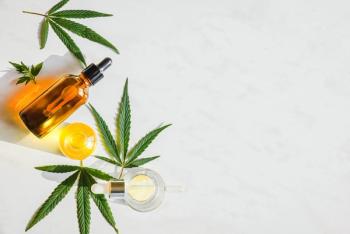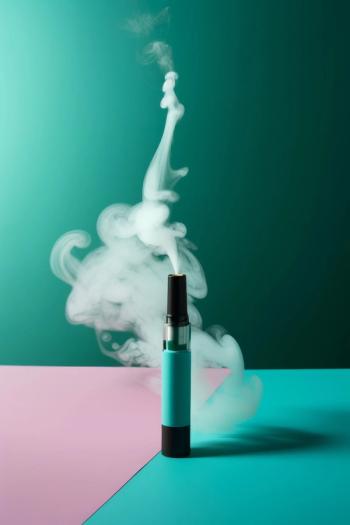
Cannabis Science and Technology
- September 2021
- Volume 4
- Issue 7
Microbiological Implications of Commercial Cannabis in Northern California: A Survey of Bacterial and Fungal Contamination
This study offers guidance to establishing meaningful quality standards for the commercialization of cannabis and cannabis-related products.
Cannabis and cannabis-related samples were collected from state regulated dispensaries
in Northern California over a seven-year period and tested for bacterial and fungal contaminations using culture-based technologies. Data indicates that most bacterial contaminations of flowers occur post-harvest caused by poor hygiene and handling protocols, whereas solvent created oils and waxes are mostly bacteria free. High bacterial numbers occur in water-based concentrates and kief (plant trichomes). Yeast and mold numbers were common on dried flowers as these organisms occur naturally on cannabis. This study offers guidance to establishing meaningful quality standards for the commercialization of cannabis and cannabis-related products.
As access to commercial cannabis continues to gain popularity and acceptance in America, it becomes necessary to understand microbiological behavior for the proper development of Hazard Analysis Critical Control Point (HACCP) and quality assurance protocols. The concept of quality assurance in this industry has yet to be widely accepted, partially due to the absence of relevant scientific research. Currently, microbiological standards are based on comparison and anecdotal information often from non-scientific sources (1–7). Yet, many states have selected specific limits of a small number of microbiological species (1,2), often declaring strict guidelines. As a result, the microbiological safety of cannabis remains obscure along with hazard and risk criteria needed for quality assurance development (8).
The current study records broad spectrum, presumptive microbiological information and provides long term data on microbial loads commonly occurring on California cannabis and cannabis products. These long-term data offer preliminary insights and guidance for the establishment of more meaningful scientific studies and quality assurance protocols for safe commercialization of legal cannabis.
Experimental:
Acquisition of Cannabis Samples
Samples of cannabis and cannabis-infused products were collected from Northern California growers, distributors, and dispensaries between 2012-2019. Flower and shake samples were collected in sterile whirl-pak bags or in retail package containers.
Sample Preparation and Controls
Bacterial and fungal fail rates were selected and modified based upon widely accepted food standards for milk and dairy products detailed in AOAC 986.33 Aerobic Plate Count (APC), AOAC 991.14 Coliform/E. coli/Pseudomonas, and AOAC 997.02 Yeast and Mold. Next, 1000 mg of each sample was placed into 9 mL of sterile Butterfield’s Phosphate Buffer (3M). Following 10 min, a 1 mL inoculate was pipetted onto an APC Petrifilm, an E. coli/coliform petrifilm, and a yeast and mold petrifilm (3M) and spread over the plate using a plate spreader. Aerobic plate count and E. coli/coliform petrifilms were incubated at 35 ± 2 °C for 48 ± 6 h, removed from the incubator, and enumerated according to manufacturer's instructions. The yeast and mold petrifilms were incubated at 20–25 °C for 72 ± 6 h. Colonies were enumerated deviating from the manufacturer’s instructions by dividing the colony number by a factor of 20. This division is necessary to accommodate for the removal of the additional buffer step suggested by the manufacturer. Yeast and mold colonies were differentiated based on morphological features: those exhibiting grey, blue, or green color with small, circular shapes displaying no filamentous features were counted as yeast. Colonies exhibiting black, grey, green, yellow, red, or other coloration and large, filamentous morphology were counted as mold. ATCC 9027 Pseudomonas aeruginosa, ATCC 10145 Pseudomonas aeruginosa, ATCC 8739 Escherichia coli, ATCC 11775 Escherichia coli, ATCC 13047 Enterobacter cloacae, and ATCC 6962 Salmonella enterica Newport were used as bacterial positive controls. ATCC 10231 Candida albicans and ATCC 16888 Aspergillus niger were used as yeast and fungal positive controls. Blank controls were plated daily.
Results and Discussion
A total of 59,088 samples over a broad spectrum of sample types submitted to CW Analytical for microbiological quality assurance testing were included in this study. Of these sample types, 28,483 dried flowers, 354 loose dry leaves (shake), 253 pre-rolled cannabis cigarettes, 1991 hashes, 533 kiefs, 10,313 solvent-processed concentrates, and 17,925 infused edible products such as infused oils, tinctures, liquids and beverages, infused fats and butters, and other edible products were tested.
Flowers
The bacterial fail rate (samples exhibiting >100,000 CFU/g) of dried flowers was measured at 14.48% of the total sample of flowers (Table I). Generally, cannabis flowers exhibit low bacterial loads during cultivation (observational data) (see note below). In most cases, flowers exhibiting high bacterial loads have been subjected to contamination post-harvest (observational data) (see note below). [Note: This has been observed from survey and conversation with cultivators via discussion of their test results. Additionally, this has been observed on cultivation facility walkthroughs and execution of remediation and good manufacturing practices.] It is postulated that the multiple terpenes, endophytic organisms, and possibly the cannabinoids themselves produced by cannabis may act as an antibacterial compound, keeping bacterial loads lower during the plant life cycle (9–14). This is supported in this study by unpublished data showing low bacterial loads on growing plants and >500,000 CFU/g found on plant material suspected to be poorly handled post-harvest. Subsequent testing to sample failures indicated E. coli detection on only 3.16% of dried flower, 6.71% detection of coliforms, and 5.14% detection of Pseudomonas, further supporting secondary contamination origins (Table II–IV). We postulate that contaminations originate post-harvest from unclean rooms, poorly cleaned tools, or poor personal hygiene of operators.
The yeast and mold fail rate (samples exhibiting >10,000 CFU/g) for flowers was measured at 15.83% (Table V). Fungal species are known to routinely inhabit cannabis species (15–17). Late season fungal growth can cause a great deal of spoilage to a cultivation and decrease crop yields (18). However, the presence of fungal spores does not indicate that a specific fungal species is actively growing on the sample in question. The higher detection rate measured in culture may indicate a higher probability of positive growth; further study is needed to confirm this hypothesis.
Water Derived Concentrates
Mechanically processed concentrates such as bubble hash or kief exhibit higher microbial loads. The bacterial fail rate of hash was measured at 58.51% of the total hash sample. Hash is typically produced by cold water filtration of leaves and flowers through a series of smaller filters and therefore should be considered a product of the Earth, with expected high bacterial loads. The detection of presumptive E. coli (14.41%), coliforms (45.71%), and Pseudomonas(1.81%) support the correlation between cleanliness, hygiene and lower microbial numbers (Tables II–IV). We suggest that the low yeast and mold loads (≥10.000 CFU/g) at 2.78% exhibited are caused by repeated water flushing, which may reduce the number of fungal spores per batch by dilution, or mechanical trapping in the filters (Table V).
Similarly, the bacterial fail rate of kief was measured at 43.71% of the total kief sample collected (Table I). Kief consists of concentrated plant trichomes that are removed from the surface of flowers and leaves through physical processes. Like hash, kief exhibits detection rates for E. coli (8.08%), coliforms (28.20%), and Pseudomonas (2.56%) that are higher than cannabis products processed by solvents, high temperatures, or pressure. Yeast and mold fail rates in kief at 8.18% were higher than hash (2.78%) possibly from the mechanical trapping of fungal spores from the environment by this adhesive-like plant material during processing (Table V).
Solvent, Temperature, and Pressure-Based Concentration
The bacteria fail rate of resin, crystals, waxes, e-cartridges, and sauces, processed by solvent, temperature, or high pressure-based processes was measured at just 0.22% of the total sample, and the yeast and mold fail rate (samples exhibiting >10,000 CFU/g) was measured at 0.00% (Tables I and V). Solvents (butane, ethyl alcohol, propane, hexane) are typically used in the production of these concentrates, and may be combined with pressure and temperature extremes (heat, LN₂, CO₂). It is thought that these treatments effectively inhibit all microbiological species, and that increased handling or processing post-manufacturing leads to higher chance of contamination.
Cannabis-Infused Edibles
The bacterial fail rate of infused-edibles was measured at 2.89% of the total infused-edible sample (Table I). Detection of E. coli in edibles were calculated at only 0.13%, coliforms at 0.47%, and Pseudomonas at 1.89% (Tables II–IV), while yeast and molds in loads exceeding 10,000 CFU/g were detected at just 0.39% (Table V). This data represents a number of edible forms including chocolate, cookies, brownies, gummies, capsules, tablets, mints, and a myriad of other food matrices. The low failure rates in this category may indicate that most producers understand the importance of hygiene and cleanliness during the manufacturing and produce temperatures that either clean or pasteurize the products.
Conclusion
Tables I and V illustrate the typical microbial load on cannabis cultivated and manufactured in Northern California. The current data, compared to the rare and anecdotal reports of microbial infections linked to cannabis (19–22), suggests that the vast majority of cannabis and cannabis products are microbiologically safe for human consumption. This study illustrates possible quality assurance thresholds and limits, based on what is typically encountered, and what level of microbial load is atypical to the majority of what is being sold on the market (23–26). This study is limited by the utilization of plating as a primary testing practice, indicating only presumptive organism identification. Correlations with technologies such as MALDI-TOF MS, PCR, selective growth agars, and biochemical characterization need to be included in the future for proper validation. Continued areas of research include: the identity and frequency of particular organisms (bacterial and fungal), sources of microbial contamination and pathways to mitigation of contamination, and the beginnings of understanding plant-microbe interactions specifically related to cannabis cultivation. Investigation into how these cultivation parameters relate to the occurrence of organisms will be crucial for setting future quality assurance measures, managing pesticide and chemical residue applications, and refining sustainable cannabis cultivation practices.
References
- ”Marijuana Labeling, Concentration Limits, and Testing” Oregon Secretary of State Archives Division. Web (2017).
- “Department of Revenue Marijuana Enforcement Division, Medical Marijuana Rules. 1 CCR 212-1,” Code of Colorado Regulations. Web.
- “Department of Revenue Retail Marijuana Code 1 CCR 212-2,” Code of Colorado Regulations. Web.
- “WAC 314-55-102: Quality assurance testing,” Washington State Legislature. Web (2013).
- “NAC453A.658. Sample testing; disposal of samples; standards; laboratory test results; grounds for disciplinary action,” Nevada Administrative Code. Web.
- Olson Hagel & Fishburn LLP, “Initiative documents for the Control, Regulate and Tax Adult Use of Marijuana Act (amended) (PDF), 15-0103” – via California Office of the Attorney General (2015).
- “Cannabis Microbial Testing Regulations By State,” Medicinal Genomics (2020). Web.
- C. Hellerman, “Scientists Say the Government’s Only Pot Farm Has Moldy Samples - and No Federal Testing Standards.” PBS, Public Broadcasting Service, www.pbs.org/newshour/nation/scientists-say-governments-pot-farm-moldy-samples-no-guidelines (2017).
- C.-Y. Wang, et al., Int. J. Food Prop. 22(1), 230–238 (2019).
- B. Das, et al., Int. J. Environ. Sci. 2(3), 1605–1609 (2011).
- T.A. Lone, et. al., Universal Journal of Medicine and Dentistry 1(4), 051-055 (2012).
- E.M.M. Ali, et al., Chinese Medicine 3(1), 61-64 (2012).
- P. Kusari, et. al., Fungal Diversity 60, 137-151 (2013).
- M. Scott, et. al., Can. J. Microbiol. 64(10), 664-680 (2018).
- J. Cervantes, Marijuana Horticulture: the Indoor/Outdoor Medical Grower’s Bible (Van Patten Publishing, 2007).
- J.M. McPartland, Mycotaxon 54, 273-280 (1995).
- V.P. Kurup, et al., Mycopahologia 82, 61-64 (1983).
- J.M. McPartland, J. Ind. Hemp 3.1, 19-23 (1996).
- T.N. Taylor, et. al., Centers for Disease Control (CDC). “Salmonellosis traced to marijuana--Ohio, Michigan”. MMWR Morb. Mortal. Wkly. Rep. 30, 77–79 (1981).
- T.N. Taylor, et. al., N. Engl. J. Med. 306(21), 1249-1253 (1982).
- Y. Gargani, P. Bishop, and D.W. Denning, Mediterranean Journal of Hematology and Infectious Diseases 3.1, doi: 10.4084/MJHID.2011.005 (2011).
- R. Hamadeh, et al., Chest 94.2, 432-433 (1988).
- WHO Working Group. “The Principles of Quality Assurance.” International Journal for Quality in Health Care 1(2-3), 79-95 (1989).
- A.B. Jones, The Quality Assurance Journal 4(1-2), 18-26 (2011).
- “HACCP Principles & Application Guidelines” FDA. (1997). Web.
- M.L. Tortorello, J. AOAC Int. 86(6), 1208-1217 (2003).
About the Authors
ROBERT W. MARTIN JR., KENDRA WHEELER, CHARISSE M. MACDULA, JORGE JACOBO, AND EMILY R. SAVAGE are with CW Analytical Laboratories, Inc., in Oakland, California.
Direct correspondence to:
How to Cite this Article
R. W. Martin, K. Wheeler, C. M. Macdula, J. Jacobo, and E. R. Savage, Cannabis Science and Technology 4(7), 16-20 (2021).
Articles in this issue
over 4 years ago
Cannabis and Hemp Tableting Challengesover 4 years ago
Does Light Spectrum Alter Plant Transpiration Rates?Newsletter
Unlock the latest breakthroughs in cannabis science—subscribe now to get expert insights, research, and industry updates delivered to your inbox.




